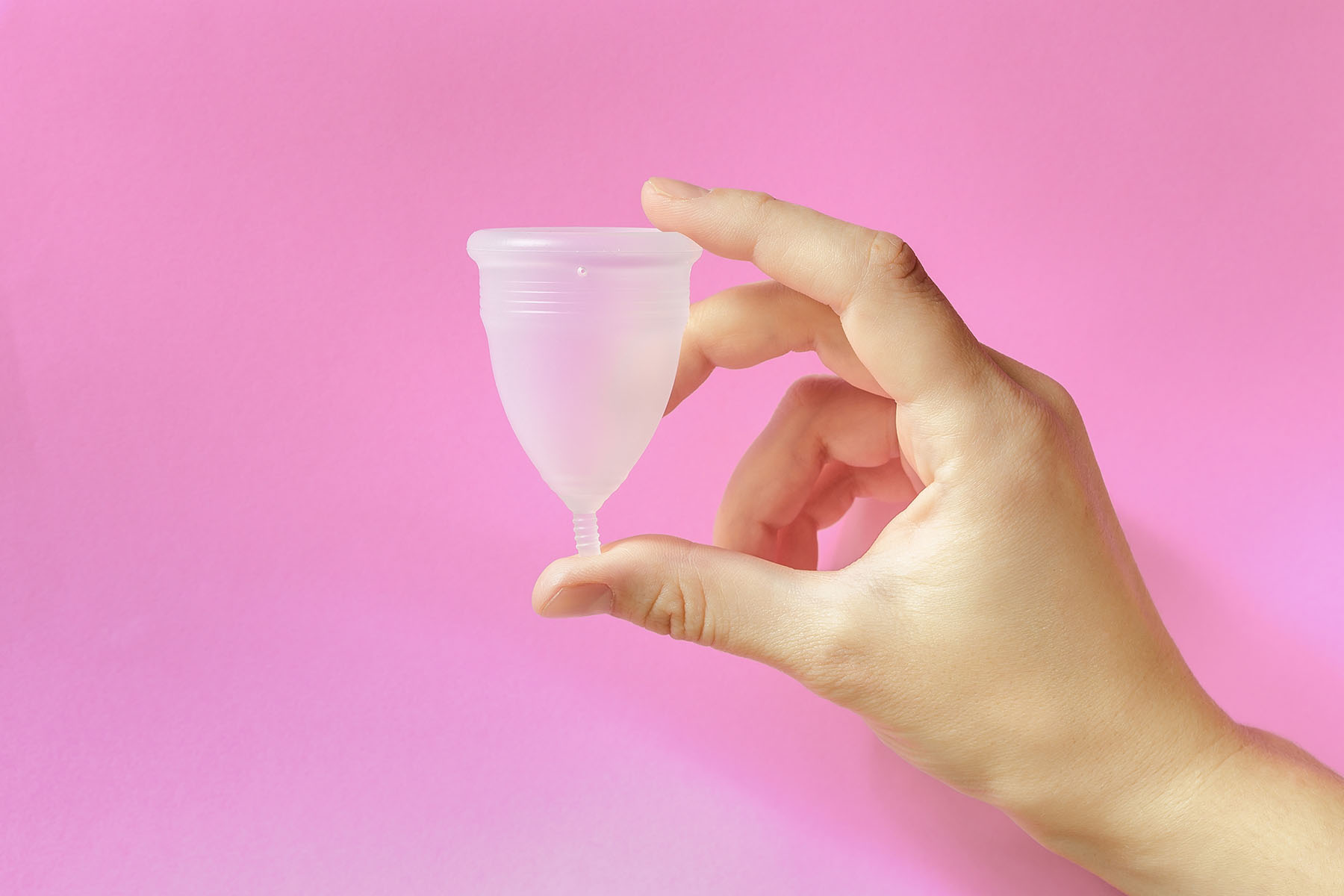Menstrual Cups: What Are They, Exactly?

Periods have undergone a sort of rebranding in recent years. Society is more open to discussing menstruation, and the market is responding with more options.
“When you think back to the 50s, you didn’t talk about your period,” said Dr. Karla Maguire, obstetrician and gynecologist at the University of Miami Health System. “It’s not hidden in shame anymore, and it’s encouraging that there are a lot more [sanitation] options available for women.”
Those options expand far beyond the standard tampon and pad — which have been the staples of feminine sanitation for decades. Now, women can weigh everything from cost and comfort to sustainability and composition.
Tampons and pads need no introduction
Even so, companies are putting a new twist on old products. With options like vegan, plastic-free, or organic, it can be difficult to discern how those things will impact your health. While marketing suggests that the use of these types of products will lead to a “healthier” you, the jury is still out on scientific research to corroborate those claims.
“I’m not aware of any studies that have shown organic products are better,” said Dr. Maguire. “However, some products, if used often, can trigger allergic reactions. In the case, I would tell sometime to switch to a more organic-type of a pad.”
What are menstrual cups?
Menstrual cups and discs act similarly to tampons, but they offer a different experience for their users.
Discs, as the name suggests, are flat devices made with a combination of materials, some of which are medical grade. While the FDA recommends 4-8 hours of use for tampons, discs have a longer wear time of up to 12 hours. The disc must be manually inserted so that it sits in the vaginal fornix at the base of the cervix.
The menstrual cup, however, is a bell-shaped device that sits in the vaginal canal. Its unique shape and materials allow users to wear the cup for up to 12 hours and it can be re-used.
A menstrual cup may last from one year to 10 years. To consumers, this means less money spent on sanitary products. It also means the planet bears less of the burden of single-use plastic.
Are there any risks?
While there are not currently any cases of Toxic Shock Syndrome (TSS) linked to the disc, there have been five cases relating menstrual cups to TSS, according to a study in The Lancet. Following the use and care instructions will help prevent that risk.
In this same study, 13 women who also have intrauterine devices (IUDs) reported that their devices had become dislodged as a result of wearing a menstrual cup. Some companies disclose that women with IUDs should not use their products for this reason.
But Dr. Maguire says that “for the average woman, it is unlikely but possible that a menstrual cup would accidentally dislodge an IUD. A lot of IUDs even decrease menstrual flow, so the chance that they’d need a menstrual cup is lower.”
Most products have some level of risk associated with them, but weigh the risk with the potential good.
Sustainable products – something that has more than one-use.
When it comes to tampons, “most people focus on the applicator being single-use plastic and adding to waste,” said Dr. Maguire.
But there’s even more plastic than meets the eye. For example, a tampon comes wrapped in plastic with a disposable plastic applicator and consists of materials including polyethylene and polypropylene (that also includes the coating on the string). These two materials are the most common types of plastic. Pads sometimes have even more plastic material because it’s used to absorb fluids. For sanitation reasons, these plastics are not considered recyclable.
Single-use plastics do have an impact on the environment. In 2018 alone, people in the U.S. bought 5.8 billion tampons, according to National Geographic. It was also reported that a woman who is menstruating may use somewhere between 5,000 and 15,000 pads and tampons throughout a lifetime, the vast majority of which will wind up in landfills as plastic waste.
In addition, women can now buy specially-designed underwear, shorts, or yoga pants (in various styles and sizes) that serve as a replacement for sanitation products. If that’s too avant-garde for you, another option is to buy plastic-free tampons.
Disclaimer: you have to manually insert these, but you can find reusable applicators online — be sure to find the right size and follow the care guidelines.
If you’re unsure, check with your doctor.
“A lot of young people get information from friends and family. But it’s important to review questions with your OB/GYN,” says Dr. Maguire.
Cara Tremols is a contributing writer for UMiami Health News.
